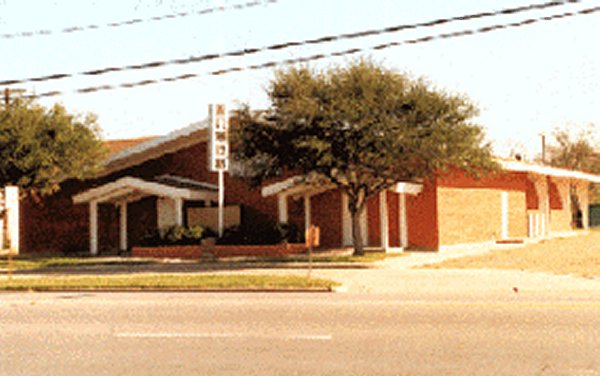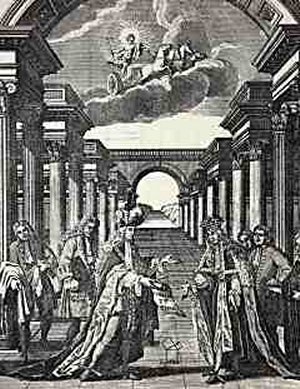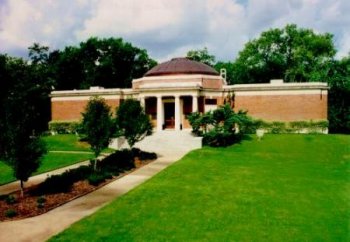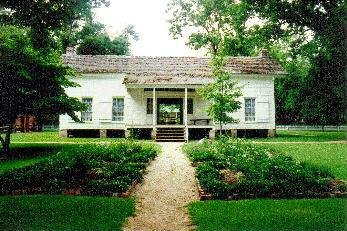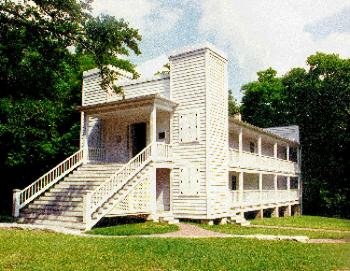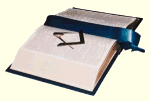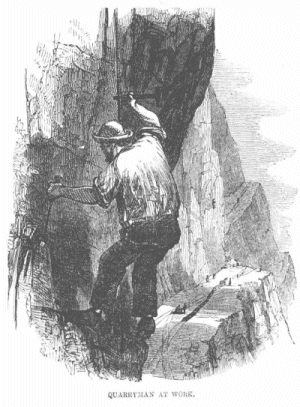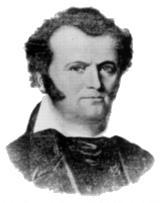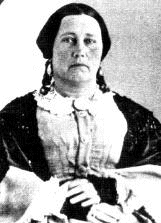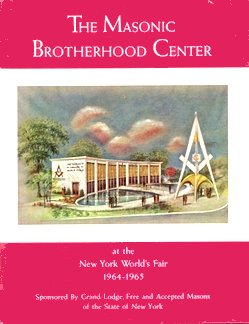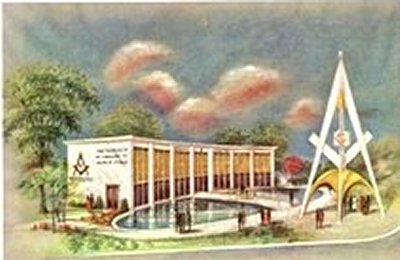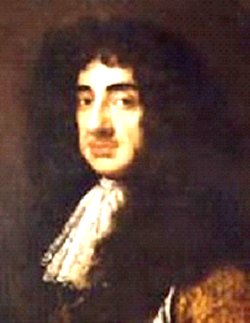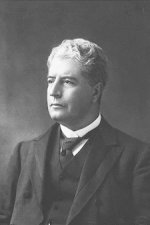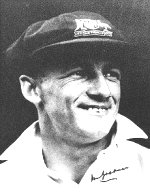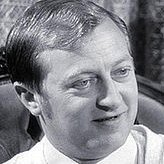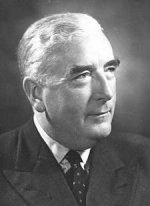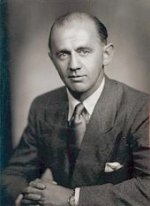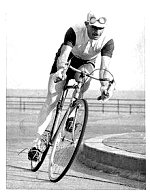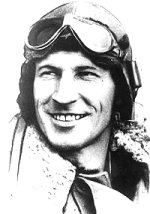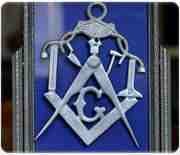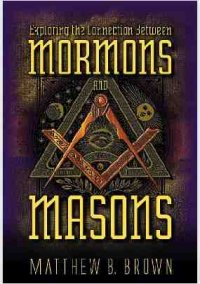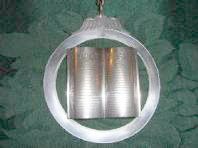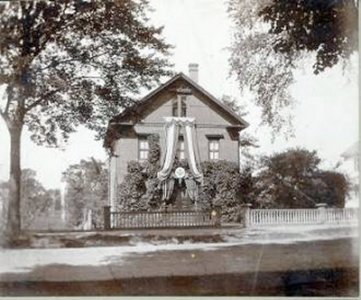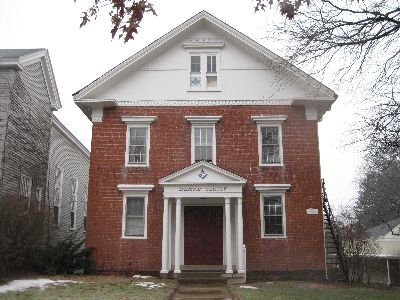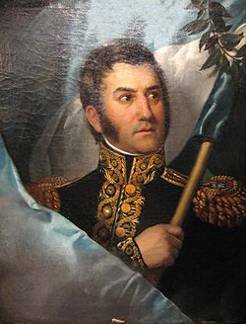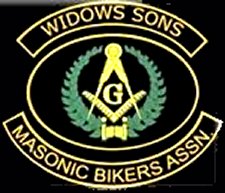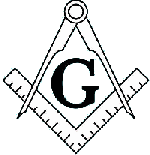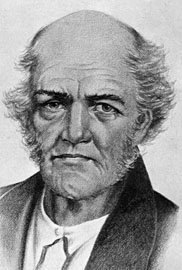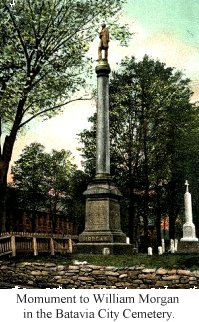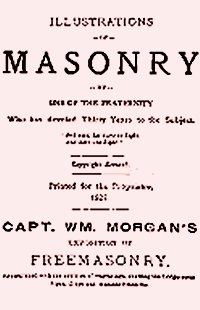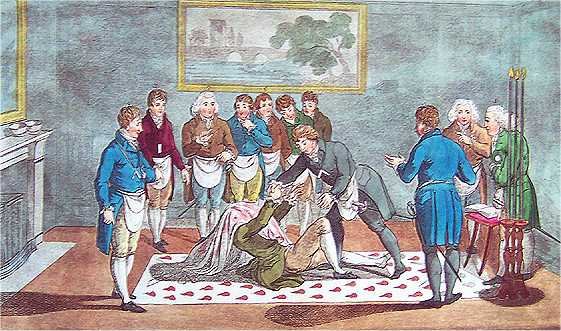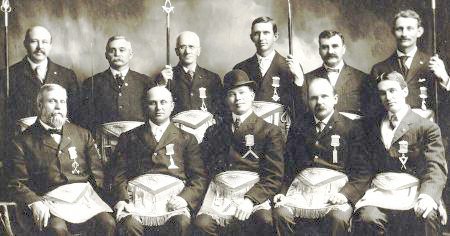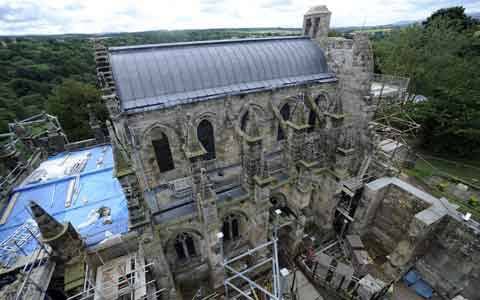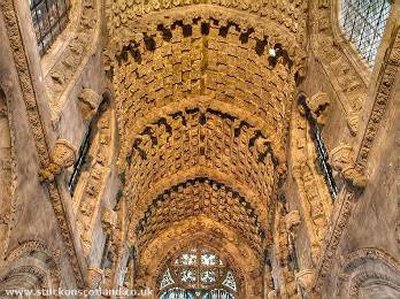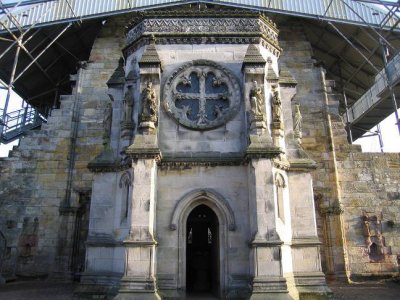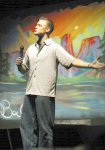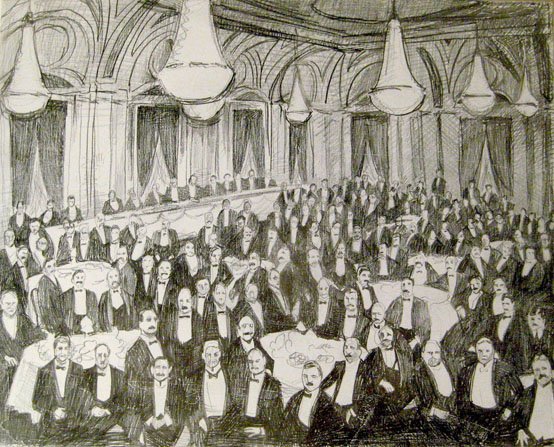
|
September 2010

Bay City Lodge #865, A.F.& A. M.
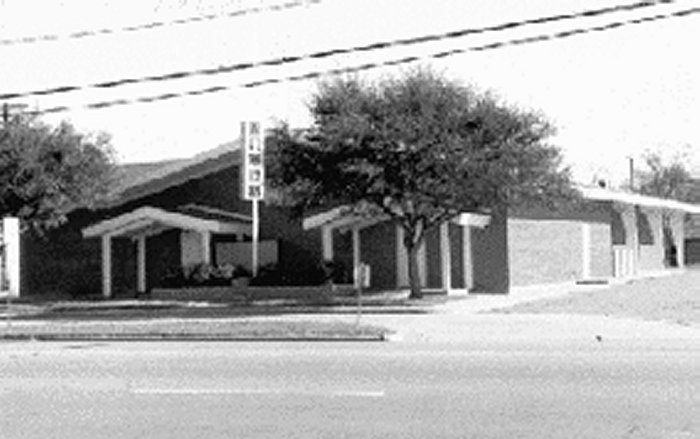 Bay City Lodge #865, A.F.& A. M. in Matagorda County, Texas |
|
Page II | |||||||||
|
This Small Town Texas Mason's E-Magazine is not affiliated with any state Grand Lodge or individual Blue Lodge. It was created to enlighten, educate and entertain Masons and non-Masons alike. As title suggests, each issue will feature a small town Texas Masonic Lodge and some Texas Masonic history or hero in each issue The beliefs, ideas and opinions expressed here are strictly those of the authors and not necessarily those of the editor, any individual Blue Lodge or any state Grand Lodge.
A very sincere effort was made to avoid using any copyrighted material, without permission or giving credit to the author, in the creation of this web site. If you discover something that is yours, without giving you due credit, please let me know and due credit will be given or the item will be replaced.
Any material in this site may be used to increase the understanding of Freemasonry.
Story tools: |
Bay City Lodge #865, A.F.& A. M.
A Masonic Did U Know? - The First Black Mason
The Sam Houston Memorial Museum Historic Site
Texas Masonic History - Was Freemasonry An Influencing Factor During The Texas Revolution?
The 1964-65 World's Fair and Freemasonry
The First Recorded Initiation In England
Our Brothers In Australia - The Fourth of Six
Concord Lodge Members Stumble On Historic Find
Argentina: Freemasonry In Buenos Aires
The Widows Sons Masonic Riders Association
History of Freemasonry - Part 1 Of 3
The Morgan Affair - Justification To Condemn Millions?
Masons Were Hotshots in Old Town
Rosslyn Chapel's Resurrection Revealed .
Treasures of Cork Past and Present Opened Up To Public.
| ||||||||
|
Page V | |
|
Author Unknown
George W. Bush had intended to take the oath of office as the nation's 43rd president on the historic Masonic bible. George Washington was the first, in 1789. The last was George H.W. Bush, who used the Bible in 1989. On Friday, 19 January 2001, three officials of the Manhattan-based St. John's Lodge of Free and Accepted Masons boarded an Amtrak liner for Washington, D.C., carrying the nine-pound, 234-year-old King James Bible in a special container. At Union Station, they were met by inaugural committee officials and escorted to the inaugural site. They were literally waiting in the wings in a room adjacent to the inauguration platform when, at the 12th hour, a decision was made (attributed to the Vice President, but not confirmed) not to jeopardize the Bible because of the rain then pelting the area. Bound in London in 1767, the Bible was brought to the colonies and given by Jonathan Hampton to the St. John's Lodge in lower Manhattan three years later when he became its grand master. Just before Washington was to take his oath of office on the steps of Federal Hall in New York City on April 30, 1789, it was discovered that there was no Bible on hand. The then-New York Gov. Robert Livingston, a Masonic grand master, borrowed the lodge's bible from St. John's Masonic Lodge, which had meeting rooms just a short distance away. A statue of Washington marks the site in front of the present-day Federal Hall on Wall Street. No printer in the colonies produced Bibles at the time, and the London import, bound in maroon Moroccan leather with silver hasps, was ''probably close to a year's wages for the average fellow.'' Despite its age and history, the lodge today puts no monetary value on the book. ''I guess the word is priceless,'' a representative said. Other presidents who have placed their left hand on the Masonic Bible were Warren G. Harding in 1921, Dwight D. Eisenhower in 1953, and Jimmy Carter in 1977. Among the six, only Washington and Harding were Masons. Harry Truman, probably the most active Mason among the nation's chief executives, did not use it, nor did several other Masons who served as president. In 1867, President Andrew Johnson, attending the dedication of a new Masonic temple in Boston, asked that the George Washington inaugural Bible be brought to his hotel room, and was seen by aides ''to weep as he held it in his hands".
In addition to its role in presidential oath-taking, the Bible was used at Washington's funeral in December, 1799, the dedication of the Washington Monument in Washington, D.C. in 1885, the re-laying of the U.S. Capitol's cornerstone in 1959, and the christening of the aircraft carrier USS George Washington at Norfolk, Va., in 1992.
It was on display at the New York world's fair in 1964-65 and at the White House for 30 days after the elder Bush's inaugural.
Between travels, it is maintained by the National Parks Service in a protective display case at Federal Hall, open to Genesis 49, 50, the pages on which Washington rested his hand to be sworn in. .
| |
Reproduced with permission from The Work on the Trestleboard
As a start to my new approach to Masonry I became involved with the education of new Brothers. Traditionally in our Lodge the Master delegates this task to an experienced Brother. In light of my new outlook, I decided to step up and become a part of the process. After all, I was the one who would declare these men as "suitably proficient". How could I do that unless I know first hand that they are so? I also felt that in order for me to be able to give direction to mentors, I needed to have been one myself.
In my research of Freemasonry I drifted toward the history of stonemasons who worked on the ancient cathedrals. The work was delegated to a Master Mason and he oversaw the many tasks of the building. The very starting point of this whole process however began in the quarry itself. It was the Master Quarryman who directed the selection of the stones which would be fitted for the builder's use according to the plans given him. It impressed me that the building of these grand edifices started not with the Master Mason, but with the quarryman who formed the ashlars for the building. With that, I set out to lay aside my duties as Master Mason for awhile and work at becoming a quarryman - shaping the stones which become ashlars for our Masonic edifice .
In New York, Brethren journeying through the degrees must learn a catechism - a series of questions and answers - which must be memorized. They must then "prove their proficiency" in the work by reciting this catechism in front of the Lodge or a committee appointed by the Master. In my Lodge, this process usually occurred outside of the Lodge proper, so that most Brethren had no idea how proficient new Brothers actually were. This was often true of the Master as well - he just took the word of the examining Brothers that proficiency was achieved. To me, that was a mistake. As Master, I virtually "signed off" on a Brother's qualification to be advanced. Therefore, they were a direct reflection of me. So, if a Brother gets to the end of the line and is completely devoid of any understanding of key concepts and symbols, he is a bad piece to be fitted into the "building". By extension, too many of these improperly formed stones will eventually compromise the integrity of the building and it might eventually collapse. Taking it a step further, as the Master Mason in charge of the building, it is my fault for allowing these stones to be used. This had to change.
"Suitable Proficiency" is a huge grey area in New York. The Master, and he alone, determines what "suitable" means. So last year I got knee-deep in running classes. I began by changing the philosophy that regurgitation of the catechism was enough. It was important that a Brother understand why he is answering a question way he does and why the questions has been asked of him. The first class of two in the Fall of 2008 were given the option to take their proficiency in open Lodge - a first for Lodge #252. Both succeeded in doing so. The Spring class of 2009 saw weekly sessions with a walk-about the Lodge. Unfettered by cable tow or hoodwink we walked through each degree so that they had a clear visual of their experience. Our last class - Winter of 2010 - went beyond. The weekly classes did all of that, plus we began to explore the symbols of the lectures - the point within a circle, the cardinal virtues, the Sts. John (to name a few). This class, in my opinion, was the best educated so far. The best part is that they are hungry for more, and have me scrambling to keep up with them.
It was truly rewarding to see these stones selected for the quarry and shaped for the edifice. There was a real sense of accomplishment - for them and for me. So now I will no longer see myself as just a Master Mason placing designs of the trestleboard. I also help to select and shape to stones which will become part of the building.
I am a Quarryman.
|
|
Page VI | ||||
1. Jealousy of Mexicans regarding the intentions of the people of the United States, and a belief that, a design to despoil Mexico of Texas was contemplated, and had the secret aid of the American government.
2. The feelings engendered by these opinions caused Mexican officials to look upon the actions of the American residents of Texas, with suspicion, and ended in treating them unjustly and oppressively.
For an objective look at freemasonry and impact on 19th century Mexican politics, see Rivalries between the Scottish Rite (Ecoseses of European continental origin) and York Rite (Yorkinos of American origin) lodges.
More interesting is if there is merit to stories related by old Texians like DeWitt colonist Creed Taylor and Joseph Lawrence, and San Antonio patriot Antonio Menchaca. Creed Taylor relates:
The scouting party that captured Santa Anna was composed of Joel W. Robinson [Robison], A. H. Miles, Charles P. Thompson, Joseph Vermillion, and Siron [Sion] R. Bostick, led by Color Sgt. James A. Sylvester, the gallant young man who bore the "Liberty or Death" flag through the Battle of San Jacinto, the only flag flown on the field by the Texans that day. In flushing the vicinity near Vince's Bayou, the Mexican general was discovered crouching in the tall grass along a small hollow. He was first sighted by Jim Sylvester who suddenly rode upon the fugitive. The Mexican had on a corporal's uniform and was barefooted. Sylvester at once signaled his men scattered around some four or five hundred yards away, and as they began dashing up and flourishing their guns, Santa Anna became excited, and it was at that moment that he first gave the Masonic sign of distress. Both Sylvester and Robinson were Masons and they understood what "them funny motions meant," and this no doubt accounts for the fact that the captive was not killed on the spot.
If these stories have merit, then the masonry brotherhood may have saved El Presidente from immediate or post-capture execution for which there was significant pressure. Arguably, execution of the dictator may have changed the course and timetable of independence and relative peace and painted the Texian freedom fighters as no more humane than their Centralista enemies.
There are other reports of use of the Masonic bond to spare execution or gain favors in actions in the Texas war of independence. A description of an event in Texas by W.P. Zuber mentions a role of Masonic membership as early as 1827:
one or more members of the fraternity. All intelligent Free Masons know this to be false; but in cases of purely political offense, Masonry has frequently been the means of saving life. Mr. Sterne being a MasonIt has often been said that no Free Mason can be lawfully punished for crime if the power of conviction or pardon rests in
Almeron Dickinson is said to have left his Masonic apron with wife Susannah and instructed her to display it appropriately if it would aid her survival assuming she were spared in the Alamo assault. There are instances where the masonry brotherhood is said to have fostered cooperation between Anglo and Hispanic Texians prior to independence in gaining favorable political conditions for settlement through colonization.
For a discussion of early Texian Masons, see Masonic Heroes of Texas. 11/29/99 for Alamo de Parras War Room
| ||||
|
Page VII | |
By blake From The Masons Of Texas Web Site
Thus runs the entry of the first ascertained recorded Masonic initiation on English soil into Speculative Freemasonry. It is the record of the initiation of one of the most remarkable men of his time. His name, by writers other than himself - for he always signed his name in bold characters as R. Moray - is spelt variously as Moray, Murray, and Murrey, and a singular mistake occurs in the standard edition of Evelyn's Diary, where the entries occur as Murray, while in the Correspondence, the only letter that appears from Moray is, of course, signed in the correct manner, with the result that both forms appear in the General Index. In Chester's Registers of Westminster he is described as a son of Sir Robert Moray of Craigie, by a daughter of George Halket, of Pitferran, but Burke's History of the Landed Gentry and other authoritative works of reference state that he was a son of Sir Mungo Murray, and this undoubtedly is correct. Sir Robert Moray was a descendant of an ancient and noble Highland family. He was educated partly at the University of St. Andrew's and partly in France, in which country he secured military employment under Louis XIII. He gained very high favour with Cardinal Richelieu, to such a degree that French historians have remarked that few foreigners were so highly esteemed by that great minister as was he. It was possibly through the influence of the all-powerful Cardinal-statesman that Moray was raised to the rank of Colonel in the French army. When, however, the difficulties of Charles I increased, Moray returned to Scotland and was appointed General of Ordnance when the Presbyterians first set up and maintained their government. He was in charge of the Scottish army at Newcastle at the time of his initiation, which took place two months before that city was evacuated by the soldiers. Moray was knighted at Oxford on 10th of January, 1643, by Charles I. Moray was also on good terms with Mazarin and fought with his regiment in Germany, and, in 1645, he was made a prisoner of war in Bavaria. About the same time he was appointed Colonel of the Scotch regiment in succession to James Campbell, Earl of Irvine, and he was nominated by the Scots as a secret envoy to negotiate a treaty between France and Scotland, by which it was proposed to attempt the restoration of Charles I. His release in Bavaria was therefore obtained and he returned to England. In December, 1646, when Charles was with the Scottish army in Newcastle, Moray prepared a scheme for the escape of the king. One, William Moray, afterwards Earl of Dysert, provided a vessel at Tynemouth, onto which Sir Robert Moray was to conduct the king, who was to assume a disguise. The king put on the disguise and even went down the back stairs with Sir Robert, but fearing that it would scarcely be possible successfully to pass all the guards without being discovered and judging it highly indecent, says Burnet, to be taken in such a condition, he changed his resolution and went back After the accession of Charles II to the throne of Scotland, Moray, in May, 1651, was appointed Justice-clerk, an office which had been vacant since the deprivation of Sir John Hamilton, in 1649. A few days afterwards, he was sworn as a privy councillor, and, in the following month, was nominated a lord of session, though he never officiated as a judge. His various appointments were, however, merely nominal, in order to secure his support to the government, particularly if it be true, as Wood asserts, that he was presbyterianly affected. His uncle, the Rev. John Moray, was a great opponent of the bishops and suffered imprisonment for his opinions. However, at the Restoration, Sir Robert Moray was re-appointed justice-clerk and a lord of session, in addition to being made one of the lords auditors of the exchequer. The Royal Society may be said to have been founded by Moray: it was certainly the outcome of suggestions made by him, and Bishop Burnet says that while he lived he was the life and soul of the Royal Society. A quibble has frequently been raised over the statement made by writers that Moray was the first president of the Royal Society, since the name of Viscount Brouncker appears in that capacity on the Charter. Moray was the sole president of the Society from its first formal meeting on 28th November, 1660, until its incorporation on 15th July, 1662, with the exception of one month from 14th May to 11th June, 1662, during which short period Dr. Wilkins occupied that honourable position, though in a Latin letter addressed to M. de Montmor, president of the Academy at Paris, dated 22 July, 1661, he styled himself Societatis ad Tempe Praeses. Nor is too much to say that it was through his influence the charter of incorporation was obtained. He was the bearer of the message from Charles II to the effect that his Majesty approved the objects of the Society and was willing to encourage it and, generally he was the organ of communication between the king and the Society. Moray was also the prime mover in the framing of the statutes and regulations. Wood, the well-known Oxford historian, states that he was a single man and an abhorrer of woman, but here he is in error, for he married the Hon. Sophia Lindsay, elder daughter of the first Earl of Balcarres, who died, without issue, at Edinburgh, and was buried at Balcarres on 11th January, 1653. If the daughter inherited the tastes and pursuits of her father, the marriage must, indeed, have been a felicitous one, since it is recorded that Sir David Lindsay, the first Earl of Balcarres, chose a private life without ambition, was learned, and had the best collection of books in his time and was a laborious chymist. There is in the library of Balcarres ten volumes written by his own hand upon the then fashionable subject of the philosopher's stone. He was raised to the peerage when Charles I visited Scotland in June, 1633. After the death of his wife, which apparently affected him greatly, Moray lived, apart from his philosophical meetings, a hermit-like existence. In a letter dated 23rd February, 1658, he wrote to a friend who had accused him of being in love: o If you think no more of a mistress not take more pains to look after one than I do, I know not why one may not think that you may lead apes among your fellow virgins when you dy. You never maet with such a cold wooer as I: since ever I came to this place I never visited male nor female but two or three cousins, and they never three times. The truth is I never go out of doors but to the church except I have some glasses to make, and then I go to the glass house. Nor do I receive visits from anybody once in two months, except it be the commander, so that I am here a very hermit. In his correspondence with Kincardin during that year (1658), he describes how he was making chemical experiments on a large scale. At one period, when he was at Maestricht, he had two rooms with a kitchen and cellar. One of the first he converted into a laboratory and there he spent his days in perfect content. "You never saw such a shop as my laboratory," he wrote, "so there's a braw name for you, though means matters. He constantly speaks of his chemical labours in the language of an enthusiast. "It is somewhat considerable that I afford you such volumes in the amount of my chemicall operations. I have had seven stills going these two days with one fire, most upon juniper berries, some with water, some with sack, and some dry." Moray was naturally of a retiring disposition. During a portion of his life he was called upon to take up a prominent position, but he never cared to be in the limelight in politics and he did his best to keep out of the political arena altogether. His books, his chemical furnaces and retorts, his music, his medical and mechanical investigations, and his philosophical friends were more to him than such stuff, as he once impatiently called politics. He was happier, far more satisfied, to be President of the Royal Society than Deputy Secretary for Scotland, Lord of Commission, or Privy Councillor. There are few characters in history, particularly among those who have undertaken peculiarly difficult, and even dangerous, diplomatic tasks, so generally revered as was Sir Robert Moray. Birch, one of the historians of the Royal Society, describes him as being universally loved and esteemed and eminent for his piety, spending many hours a day in devotion in the midst of armies and courts. He had an equality of temper in him that nothing could alter, and was in practice a stoic, with a tincture of one of the principles of that sect, the persuasion of absolute decrees. He had a most diffused love to mankind and delighted in every occasion of doing good, which he managed with great zeal and discretion. His comprehension was superior to that of most men. He was considerably skilled in mathematics and remarkably so in the history of nature. Nor is Birch a solitary appreciator of his character. Bishop Burnet, a historian of higher rank, styled him the wisest and worthiest man of his age; and, on another occasion, he wrote: I have every joy that next to my father I owe more to him than to any other man. To Evelyn he was a deare and excellent friend; Sheldon, the Archbishop of Canterbury, was absolutely won by his charm of manner; Pepys speaks of him as a most excellent man of reason and learning, and understands the doctrine of music and everything else I could discourse of very finely; while his sovereign and personal friend, King Charles II, tersely gave expression to his independence of character by the statement that he (Moray) was head of his own church. A writer in the Scottish Review for January, 1885, said: To the beautiful and remarkable character of Robert Moray justice has yet to be done. Few men of so strong and decided a personality have left behind them so little trace upon the public documents of their time: except in a few Privy council letters his signature does not appear at all. A writer in the Biographica Britannica says that his general character was excellent in the highest degree. He was beloved and esteemed by men of every party and station.
|
|
Page VIII | |
Continued From Page VII
It was in the society of such men as Andrew Marvell, John Evelyn, and Robert Moray that Charles II loved to linger; his delight was not, as some have asserted, in consorting with less noble types of humanity. Wood is of opinion that the degree of intimacy existing between Charles II and Sir Robert Moray was probably more upon a philosophical than a political basis for he was employed by Charles II in his chemical processes and was indeed the conductor of his laboratory. Birch says that it was Moray who first interested the sovereign in philosophical pursuits. Charles II was a frequent visitor to the laboratory in Whitehall, which, though nominally Moray's workshop, is said to have been conducted by him for and on behalf of the king, and there may be truth in the opinion more than once expressed that Charles II was also a royal initiate of the ancient and honourable order known as Freemasons. In any case, assuming, which is very unlikely and improbable, that Sir Robert Moray was the first non- operative to be initiated into the mysteries of the Craft in England, Freemasonry has no reason to be ashamed when it looks to the rock whence it was hewn.
Moray was the friend and benefactor of the well-known mystic, Thomas Vaughan, who, says Wood, settled in London under the protection and patronage of that noted chymist, Sir Robert Murray, or Moray, Knight, Secretary of State for the kingdom of Scotland. At the time of the plague, Vaughan accompanied Moray to Oxford and the latter was with Vaughan when he died there. Vaughan was buried in the church of Aldbury, or Oldbury, about eight miles from the university city, by care and charge of the said Sir Robert Moray. This was in 1673, shortly before Moray's own death and but a few hours after he had informed Wood of the passing of Vaughan.
Moray's life came to an end in a very sudden manner. It occurred on 4th July, 1673, and Burnet, recording the event, wrote: How much I lost in so critical a conjuncture, being bereft of the truest and faithfullest friend I had ever known: and so I say I was in danger of committing great errors for want of so kind a monitor.
Under date of 6th July, 1673, Evelyn wrote in his Diary: This evening I went to the funeral of my dear and excellent friend, that good man and accomplished gentleman, Sir Robert Murray, Secretary of Scotland. He was buried by order of his Majesty in Westminster Abbey, and then he added in a footnote: He delighted in every occasion of doing good. He had a superiority of genius and comprehension. Moray was not only buried in the Abbey by the King's express command, but also at the King's personal expense. His grave is by the Vestry, door, close to the grave of Sir William Davenant, sometime laureate to Charles II; the name appearing in the register as Sir Robert Murray.
His memory remained green with John Evelyn, for six years afterwards - on 11th July, 1679 - writing to Dr. Beale, he said, referring to the Royal Society: You know what pillars we have lost, Palmer [Dudley Palmer, d. 1666, one of the first council, with Moray, of the Royal Society], Moray, Chester [Dr. John Wilkins, Bishop of Chester], Oldenburg, etc.
Evelyn made frequent mention of Moray in his Diary, as will be seen from the following excerpts:
9th May, 1661. At Sir Robert Murray's, where I met Dr. Wallis, Professor of Geometry at Oxford, where was discourse of several mathematical subjects.
22nd August, 1662 (the day after Evelyn was sworn one of the Council of the Royal Society), I dined with my Lord Brouncker and Sir Robert Murray.
25th January, 1665. This night being at Whitehall his Majesty came to me standing in the withdrawing room, and gave me thanks for publishing The Mystery of Jesuitism, which he said he had carried two days in his pocket, read it, and encouraged me; at which I did not a little wonder; I suppose Sir Robert Murray had given it to him.
19th July, 1670. I accompanied my worthy friend, that excellent man, Sir Robert Murray, with Mr. Slingsby, Master of the Mint, to see the latter's seat and estate at Barrow-Green in Cambridgeshire.
Wood, recording the demise of Moray, wrote: He had the king's ear as much as any other person and was indefatigable in his undertakings. . . . He was most renowned chymist, a great patron of the Rosi-Crucians, and an excellent mathematician. His several relations and matters of experiment, which are in the Philosophical Transactions (of the Royal Society, many of which referred to the phenomena of the tides) show him to be a man well vers'd in experimental philosophy.
After his initiation into the Craft there is only one other record of his attendance at a meeting of the Lodge of Edinburgh, which was on 27th July, 1647, on the occasion of the admission of William Maxwell, doctor off Fisick ordinate to his Maj'stie hines, when he signed the minute of the meeting. ln his correspondence, however, he frequently made use of his Masonic mark (five-pointed star), particularly in his correspondence with Lauderdale, and this has been reproduced in the Lauderdale Papers without comment, beyond the mere statement that Moray frequently made use of his Mason mark when he referred to himself or had anything of importance to communicate. If this had been an unusual occurrence in correspondence at that day one would think that more notice would have been taken of such an incident.
An interesting story might be woven around Moray and his circle, for the men who composed that circle bore names which are familiar to every student of the history of the Craft. Such men as Wren, Ashmole, Brouncker, and others, all of whom are accredited with having been initiated into Freemasonry. Moray's name, together with that of Christopher Wren, is to be met with on almost every page of the early volumes of the Journal of the Society.
It is also of interest - may it not even be said, of significance - to compare the constitutions of the Royal Society with those of the Masonic Order. Sprat, the earliest historian of the Royal Society, says that they freely admitted men of different religions, countries, and professions. This they were obliged to do, or else they would come far short of the largeness of their own declarations. For they openly profess not to lay the foundation of an English, Scotch, Irish, Popish, or Protestant Philosophy, but a Philosophy of Mankind. Members were elected by ballot, being proposed at one meeting and balloted for at another. The duties of the President were to call and dissolve the meetings, to propose the subjects for discussion or experiment, to regulate the proceedings, to change the enquiry from one thing to another, to admit the members elected. The President, on his installation, took an oath as follows: I . . . do promise to deal faithfully and honestly in all things belonging to the Trust committed to me, as President of the Royal Society of London for improving Natural Knowledge. So help me God.
Whatever, however, may be the deductions on this ground, it will unhesitatingly be admitted that none could more have sought the study of the liberal arts and sciences that came within the compass of his attainment than did Brother Sir Robert Moray, the first known initiate into the Craft of Freemasonry on English soil.
Source: The Builder, Dudley Wright. 1921
This article was originally published in forum thread: The first recorded initiation in England started by blake View original post
| |
|
Page IX | |||||||
Famous Australian Freemasons
From The Freemasons Victoria
First Prime Minister of the Commonwealth of Australia, Speaker of the legislative assembly, Australian Lodge of Harmony No 556 (EC).
Sir Edmund Barton, GCMG, QC (18 January 1849 – 7 January 1920), Australian politician and judge, was the first Prime Minister of Australia and a founding justice of the High Court of Australia. Barton's greatest contribution to Australian history was his management of the federation movement through the 1890s. Elected at the inaugural 1901 federal election, Barton resigned from the position of Prime Minister of Australia in 1903 and became a judge of Australia's High Court.
Australian Cricketer, Lodge Tarbolton, No 12
Sir Donald George Bradman, AC (27 August 1908—25 February 2001) was an Australian cricketer, acknowledged by many as the greatest batsman of all time. Later in his career he was an administrator and writer on the game. Bradman is one of Australia's most popular sporting heroes and one of the most respected past players in other cricketing nations. His career Test batting average of 99.94 is by many measures the greatest statistical performance in any major sport.
AO Australian Television personality, Lodge of St Kilda, 1955
Graham Cyril Kennedy, AO (15 February 1934 – 25 May 2005) was an Australian radio, television and film performer and "The King" of Australian television. Kennedy was a pioneer of Television in Australia, hosting the variety programme In Melbourne Tonight for thirteen years. He then went on to host the game show, Blankety Blanks, still one of the worlds highest rating game shows. He was King of Moomba, inducted into the Logie's Television Awards Hal of fame in 1988 and is fondly remembered by many as “the King of Television”.
AO 12th Prime Minister of Australia, Austral Temple Lodge No. 110, VC
Sir Robert Gordon Menzies, KT, AK, CH, QC (20 December 1894 – 15 May 1978), was the twelfth Prime Minister of Australia. His second term saw him become Australia's longest continually serving Prime Minister, at sixteen years. He had a rapid rise to power as Prime Minister at the 1940 election. A year later, his government was brought down by MPs crossing the floor. He spent eight years in opposition, during which he founded the Liberal Party. He was re-elected Prime Minister at the 1949 elections and dominated Australian politics until his retirement in 1966. Menzies was renowned as a brilliant speaker, both on the floor of Parliament and on the hustings; his speech "The forgotten people" being an example of his oratory skills.
20th Australian Prime Minster, Lodge University of Sydney, No 544
Sir William "Billy" McMahon, GCMG, CH (23 February 1908 – 31 March 1988). 20th Prime Minister of Australia, had practised in Sydney with "Allen, Allen and Hemsley", the oldest law firm in Australia. In 1940 he joined the Army, but because of a hearing loss he was confined to staff work. In 1951 Prime Minister Robert Menzies made him Minister for Air and Minister for the Navy. Over the next 15 years he held the portfolios of Social Services, Commerce and Agriculture and Labour and National Service. When Prime Minister John Gorton resigned during a leadership challenge in 1971, McMahon succeeded him as leader and Prime Minister. When he resigned from office he had been a minister continuously for 21 years and 6 months, a record in the Australian Parliament.
World's Fastest Bicyclist in 1930s; Governement Minister; High Commissioner to Malta, Stonnington Lodge, No 368.
Sir Hubert Ferdinand Opperman OBE (29 May 1904 - 24 April 1996), was an Australian cyclist and politician, whose endurance cycling feats in the 1920s and 1930s earned him international acclaim. Hubert Opperman rode a bicycle from the age of eight, when he was a Post Office messenger, until his 90th birthday. After the war Opperman joined the Liberal Party of Australia and in 1949 was elected to the Parliament of Australia for the Victorian electorate of Corio. He served in parliament for 17 years. He became the Government Whip in 1955. Between December 1963 and December 1966 he was Minister for Immigration and oversaw a relaxation of conditions for the entry of people of mixed descent and a widening of eligibility criteria for entry by well-qualified people into Australia. After his retirement from politics in 1967 he was appointed as Australia's first High Commissioner to Malta, where he remained for 5 years.
aviator who was first to cross the Pacific from the US to Brisbane. Lodge Gascoyne, No 62.
Air Commodore Sir Charles Edward Kingsford Smith, MC, AFC (February 9, 1897 - November 8, 1935) was a well-known early Australian aviator. In 1928, he made the first trans-Pacific flight from the United States to Australia. He also made the first non-stop crossing of the Australian mainland, the first flights between Australia and New Zealand, and the first eastward Pacific crossing from Australia to the United States. He also made a flight from Australia to London, and set up a new record of 10.5 days. The major airport of Sydney, located in the suburb of Mascot was named Kingsford Smith International Airport in his honour.
|
|
Page X | ||
By Aaron Shill From The "Mormon Times
Some critics claim that Joseph Smith concocted the Mormon temple ceremonies after becoming a Freemason, but that's also a myth, Brown says. The history and richness of LDS temple ordinances cannot be explained away by comparisons to Freemasonry. "Exploring the Connection Between Mormons and Masons" (Covenant Communications, 2009) takes on such myths that keep "critic, bystander and Saints alike" from seeing the bigger picture. The book and companion DVD documentary appeal to history to demonstrate how Masonry can't account for LDS temple ordinances. "We can see better parallels in the ancient world in many ways than we see in Masonry," LDS scholar Daniel Peterson says on the documentary. "Masonry does not account for all the parallels to the ancient world. ... Does it have something to do with the temple? I think undeniably so. Does it account for it? Absolutely not."
Brown quotes one scholar, Dr. Andrew Prescott, as saying that legends about "ancient charters" were used by 15th century stonemasons "to protect (them) from the effects of recent labor legislation." "That's the mythology that you have to get past in order to understand the bigger picture here," Brown says. " ... It was done just for the purpose of getting a prestigious pedigree. And so you have to start sorting things out from that point." While there is "no solid consensus on where the Masonic organization and its rituals came from," orthodox Christianity is "the place to start looking," Brown writes. He quotes several sources that link Freemasonry with the early Christian church. One source, Robert Cooper of the Grand Lodge of Scotland Museum and Library, said, "Freemasonry adopted much Christian symbolism and iconography. ... Freemasonry doubtless used other sources and invented some, but the majority were adopted from Christianity." Another, John Hamill of the United Grand Lodge of England, said, "None of the symbolism employed in Freemasonry is peculiar to Freemasonry. It has all been borrowed." Brown says many elements of Freemasonry's rites -- such as the Tiler (guard) and dramatization of a legend, among others -- are "solidly grounded in, and very likely drew from, the initiation ceremonies of the orthodox Christian church." "When you're trying to determine where did they get their ritual and symbolism, you can see that there are some exacting parallels between what Freemasons do during their ceremonies and what Christian kings or priests or monks do during their initiation ceremonies," Brown says on the documentary. "And when you put them together, it's unmistakable that there's a connection between the two." LDS Church founder Joseph Smith was a member of the fraternal organization, becoming a Master Mason in March 1842. Forty-eight days later, he introduced the temple endowment. "This is where people think there is controversy," Peterson says. "I don't agree with that particular point of view, because I look backward a lot farther into the history to see what is going on before that point in time." According to Brown, "the theory that Joseph Smith took ritual elements from the Freemasons in order to create the LDS temple ceremony is principally founded upon the concept of time. ... But when a much broader survey of time is taken by the student of the past and the events of history are scrutinized in a much more careful manner, then this theory takes on the appearance of a movie façade; it is not nearly as sturdy as it looks." Brown argues that the Prophet knew and thought much about the Nauvoo-era endowment long before he was introduced to Freemasonry. He references instructions and teachings given prior to 1842 dealing with the pattern for the temple, outlining activities to perform there, and principles like eternal marriage, baptism for the dead and the three degrees of glory. Critics claim that symbols on the Salt Lake Temple were taken from Masonry, but Brown says they were present in Mormon practice long before Joseph Smith became a Freemason. For example, Brown found 20 references to the "all-seeing eye" and four references to bees in LDS history occurring before 1842. References to a more complete endowment, beyond what was introduced in the Kirtland Temple, were also made before 1842. By examining history, "it becomes obvious that the Nauvoo-era temple ordinances and doctrines did not suspiciously materialize after Joseph Smith became a Freemason," Brown writes. Before joining the fraternity, Joseph Smith had associates who were Freemasons, including brother Hyrum Smith and apostle Heber C. Kimball. Brown, however, says there is no evidence suggesting the Prophet knew about Masonic secrets before becoming a Freemason himself. In fact, revealing such secrets would be grounds for punishment, and "there is no evidence of any such action being taken against a Mormon Mason for making improper disclosures to Joseph Smith." The nine men who first received the Nauvoo ordinances were all Freemasons.
"And there was no mistaking that there were some resemblances between the two rituals for, as Heber C. Kimball wrote just a month after being endowed, 'There is a similarity of Priesthood in Masonry,'" Brown writes. "And yet, no incredulous cry about bootlegging or fraud rang out from this group against the Prophet."
|
|
Page XI | |
However, masonry does have a couple of religious prerequisites. To meet the first requisite a candidate must have is a belief in a Supreme Beingor creator. It does not matter which religion the candidate practices. It could be Christian, Jewish, Moslem, Shinto or Buddhist just to mention a few of the more common religions practiced in today's world. An agnostic is someone who believes there is a supreme being but does not believe the being made itself manifest unto mankind. In effect the world was created, wound up and left to perpetually run by itself like a clock. Since the agnostic believes in a Supreme Being or creator they could qualify as a candidate. An atheist would not be eligible as a candidate. The next requisite is a mason should attend, practice and support the religion to which they belong. Masonry is not included because it is not a religion. Therefore there is nothing in the Masonic teachings which would contradict, diminish, interfere, discount or impair mason's duty to their professed religion. Perhaps you read my New Years resolution on religious tolerance. There is only a dichotomy if you believe Masonry is a religion. Once again let me restate Masonry is not a religion. Masonry leaves the salvation, nourishment and guidance of one's soul to the religion the religion a mason professes. When a Free Mason speaks of light he is not talking about spiritual light but of knowledge and appreciation of the arts and sciences.
"O.K., if it isn't a religion… then what is it?" you may be asking. I promised you a simplistic explanation and I will do so using the following analogy, at the risk of perhaps insulting some masons, who will have to forgive me, strictly for illustration purposes. You may equate Free Masons with Boy Scouts. Adult Boy Scouts if you will. The Masonic Blue Lodge could be equated to the Cub Scouts, the York or Scottish Rite with the Boy Scouts and the Shriners as the Eagle Scouts. The Free Mason Order is simply a fraternity of men, from different walks of life, persuasions and religions beliefs who have come together to do good and improve their knowledge and culture. Just like the Scouts who endeavor to earn "Merit Badges" for skills they have learned the Free Masons strive to enhance personal skills. Just like the Scout fraternal organizations use Indian Lore and trappings to make meetings more adventuresome, let's face it most meetings are boring, the Free Masons use themes, like you might have used a theme at a high school prom. The Masonic Blue Lodge (first level) uses the building of Solomon's Temple as a theme. The York and Scottish Rites use Heraldry as a theme, the Shriners use the Far East as a theme. You could think of the Free Mason's as the first "Support Group." Free Masons believe in supporting each other when the other is in trouble.
"So why then," you ask, "do Free Masons get such a bad rap from some organizations?" I believe this comes from a lack of knowledge about the Free Mason Order. The Free Masons hold their meetings in "Secret." The purpose of this "secrecy" is not to conduct some sinister, clandestine agenda but to enhance the concept of one coming out of the Dark Ages (where knowledge and the arts were persecuted due to superstition) and into the Renaissance, if you will, on a personal basis. Remember the original masons of Solomon's Temple were craftsmen. At that time a mason was any craftsman or artisan not just workers of stone. These artisans were considered treasures and were protected by putting them in a guarded cloister to live. Just like Home Owner and Condo Associations are people who come together to insure the quality of life in their cloister (the Condominium or Home Owner project) the masons of that time were able to accomplish the same thing. They had one bargaining chip. They had their skill and could choose whoever they wanted to train. By keeping their "Trade Secrets" they could control who lived in their cloister by making sure the apprentice candidate was of reputable character. Just like the Condo and Homeowners Assoc. do now. Only they had no control over anyone who was already an artisan. In order to keep as many undesirables out it was import to keep one's trade secrets so undesirables did not learn a craft and therefore be allowed to live in the cloister. Life in the cloister was usually much better, and safer, than living among the general populace of common labors. They would have excluded slaves because a Master could command a Slave to teach others and the Slave would have to obey. Pagans (people who did not believe in a Creator or Supreme Being) weren't acceptable either. If they made an oath there was no underlying moral belief compelling them to keep their promise. The candidate for apprentice had to have some history. Someone who had recently been brought from the provinces, and no one knew, would be wild card. There would be no way to know if they could keep a secret or not. Or if they had lived a life as someone who professed a religion. Also, since the artisans lived in the cloister with their families, it was important to know the candidate would respect the wives, daughters and families or the people who were to teach them who to use trade tools and accept them into their community. It is this concept that is passed down in Free Masonry. Just like the original masons who built King Solomon's Temple did not want to socialize with the "riff-raff" the Free Mason controls his social environment, which is important to nurturing his enlightenment, by being selective in the candidates it chooses to be members. Since the original King Solomon Masonic builders lived in a cloister they became like brothers and would come to one another's mutual aid. Today it isn't that the Free Mason rituals or teachings are that important that revealing them would devastate the order. On the contrary a number of people, who believed they could destroy the Free Masons by revealing their ceremonies have done just that. One Free Mason Order in England now performs all of its ceremonies and rituals in the open by providing an antechamber where people may watch. The importance today is not the secret but the individuals promise to keep it as a reflection of an individual's resolve to maintain the high standards of the Free Mason Order.
Unfortunately it is this "secrecy" some have attempted to impugn the Free Masons. Let us address those in closing. The Free Masons have an alter but it is to alter the person from living in ignorance and living in knowledge and culture. It speaks of light but this is not spiritual light but the light of knowledge over ignorance. It refers to a lodge's leader as Worshipful but in the old English, in which Free Masonry is still conversed in, of Worchipful (as in the Old English King James version of the bible) meaning "Honorable." Such as, "worchip thy fithir and mithir."
I want to dispel another myth. To those who believe Washington D.C. was designed by a Free Mason and the design contained a pentagraph and this is evidence the Free Masons were plotting the destruction of the United States. Be informed George Washington, Benjamin Franklin, Paul Revere, Samuel Adams and many of the "founding fathers" were Free Masons. That the ideals in the United States Constitution are derived from Free Mason tenants. That the "Great Experiment" which is called "The United States of America" is in reality the "Great Masonic Experiment." If you really want to understand Free Masonry, without joining and learning on your own, read the "Constitution of The United States of America."
Excerpts from Bro. Glenn Fannin's "What is a Mason"
This article was originally published in forum thread: What is a Mason? started by Blake
|
|
Page XII | |||||
|
WCVBTV, Boston MA
"We're excited. Proud. It links us again to the heritage that the lodge has," said Douglas Ellis, the senior deacon at the Corinthian Lodge in Concord who said that about a year ago two members were doing some cleaning at the lodge and stumbled on a bag of a antique-looking "jewels," the decorative medals Masons wear for ceremonial occasions.
"They were in a box up in a store room and we were like, 'Oh my. Look what we have
here.'"
Suspecting that the jewels might be pretty valuable, last month they asked a visiting Mason from Spain who is something of a silver expert what he thought of the cache. He confirmed their hunch that the jewels very well may have been created by Paul Revere himself.
It was also the same year that a set of jewels was donated to the Concord Lodge by its first Lodge Master, Dr. Isaac Hurd, who was initiated as a Freemason by none other than Revere, back in 1777.
"You know there was a very close tie between these two men," Ellis said, although he admits that it has been tough to say for sure that the jewels were made by Revere. Subsequent examinations of the jewels made at the National Heritage Museum in Lexington and by the curator of the Revere silver collection at Boston's Museum of Fine Arts show many similarities between the Concord lodge jewels and others known to have been made by Revere, but "there are also a lot of things that do not fit," said Ellis.
"There's a lot of mystery that's still out there," he said. "Although it's not conclusive, all the signs point inthat direction."
Although Ellis valued the silver jewels, which resemble ornate medals, at between $150,000 to $300,000, he said the small 14-piece set doesn't even come close to the massive fictional treasure hidden by Masons in the National Treasure film.
"This is nothing like that. These were items we were given or purchased. Revere did this as a business. He made money off this," Ellis said, and it's likely he made a good income as he chartered 23 new Masonic lodges in Massachusetts during his tenure as Grand Master.
Ellis said the jewels are now locked up tight off site from the lodge and will only be brought out for special events, but their link to the Mason's, and the hall's, rich history, and to one of their most illustrious members, is what makes them priceless to the members. "It's very fun," said Ellis.
Today, the setting is far from farming. Freemasonry continues to be vigorous in the community. The Concord Masonic building is now home to Corinthian Lodge, Houghton-Walden Royal Arch Chapter, Adoniram Council Royal and Select Master Masons, Nashoba Valley Court #13 Order of the Amaranth (the Court of the Grand Master's grandmother) and Concord Assembly #53 of the Order of the Rainbow for Girls.
Corinthian Lodge became the 26th lodge constituted by the Massachusetts Grand Lodge. With the charter in hand, the petitioners met in the grand jury room at the Court House in Concord on 5 July 1797, the day following the annual Independence Day celebration.
On 13 November 1820 Corinthian Lodge and the Town of Concord dedicated their new brick building that was to be used as a school and the first permanent Masonic Hall. It is said that the young Henry David Thoreau was a teacher here for a short time. From 1797 to 1916, Corinthian Lodge operated as a “moon lodge.” Its meeting dates were tied to the arrival of a full moon, which helped the brothers traveling on foot and horseback without benefit of electricity. The first Master was Dr. Isaac Hurd , who later served as Senior Grand Warden and was the son of Benjamin Hurd, for whom the Distinguished Service Medal of Royal Arch Masonry
is named. Many notable Masters took office in the ensuing years. Among them were Dr. Lemuel Shattuck for whom the Boston hospital is named; Louis A Surette, a historian and author of many Masonic histories; and Ephraim W Bull, who developed the Concord grape.
During the 50th anniversary of the battle at the bridge over the Concord River where the farmers stood and fired the shot heard around the world, the Masons of Corinthian Lodge were prominent in the laying of the monument cornerstone on 19 April 1825.
|
|
Page XIII | |||
|
By Ian F Thurn
Going forward in time and leading up to May 25, in 1808 Don José de San Martín joined his first lodge, the “Logia Integridad” in Cadiz, where the Worshipful Master of the lodge was General Francisco Solano, Captain General of Andalucia. It was at this time that San Martin, who was only a junior Mason at the time, met Lord Mac Duff, a noble Scotsman, who was plotting the liberation of South America. San Martín travelled to England where he was put into contact with Alvear, Zapiola, Berro and Guido who formed part of the Lodge Lautaro created by Francisco de Miranda, who along with Bolívar, were already fighting in Venezuela for its liberation.
On March 9, 1812 San Martín arrived in Buenos Aires on board the Royal Navy Frigate George Canning direct from London, accompanied by a group of high ranking military personnel such as Chilavert, Zapiola, Carlos de Alvear, Arellano and Baron Olambert.
It is interesting to note that the First Triumvirate in 1811, the Second in 1812, the Declaration of Independence in Tucumán in 1816, the Constituent Assembly in 1853 and the Assembly of 1860 were mostly formed by Masons.
To this day, Excelsior Lodge No. 617 continues to meet regularly in Buenos Aires.
On 5 December 1861 and thanks to the intervention of Excelsior Lodge a Treaty was signed between the United Grand Lodge of England and the Grand Orient of the Argentine Republic whereby the United Grand Lodge of England recognizes and acknowledges the Sovereignty and Independence of the Grand Orient of the Argentine Republic as a true Masonic Power located in Buenos Aires.
In 1861 Silver River Lodge No. 876 in Montevideo opened, in 1864 Star of the South Lodge No. 1025 and in 1872 Lodge of Harmony No. 1411 in Valparaíso followed, all three lodges are operative to this day.
Shortly after about 27 other English lodges were consecrated and started to operate in Buenos Aires, Rosario, Mendoza, Tucumán, Córdoba, Bahía Blanca, Campana, Quilmes, Villa Devoto, Hurlingham, Lomas de Zamora and Tigre.
English Masonry continues to this day working in Montevideo, Valparaíso, Buenos Aires, Córdoba city, Lomas de Zamora and Tigre, all under the District Grand Lodge of South America, Southern Division. This District covers Uruguay, Argentina and Chile.
Freemasonry is not a secret society but rather a society with secrets and is one of the world's oldest secular fraternal societies practiced under the United Grand Lodge of England, which administers Lodges of Freemasons in England, Wales and in many places overseas including our District in Buenos Aires.
Freemasonry is a society of men concerned with moral and spiritual values. Its members are taught its precepts (moral lessons and self-knowledge) by a series of ritual dramas — a progression of allegorical two-part plays which are learnt by heart and performed within each Lodge — which follow ancient forms, and use stonemasons' customs and tools as allegorical guides.
Freemasonry instills in its members a moral and ethical approach to life: it seeks to reinforce thoughtfulness for others, kindness in the community, honesty in business, courtesy in society and fairness in all things. Members are urged to regard the interests of the family as paramount but, importantly, Freemasonry also teaches and practices concern for people, care for the less fortunate and help for those in need. | |||
|
Page XIV | |
|
Submited By Brother Dwight Seals
In every location where we have a chapter, the Widows Sons have proven themselves to be a positive asset to the fraternity. Many of our chapters are proud to have current and past Grand Masters as members. We regularly attract new members to the fraternity, and several of our chapters have their own Degree Teams or volunteer in doing Masonic work whenever possible. Each Widows Sons chapter sponsors or participates in local charity runs or events. In all cases, we strive to present a positive image of Freemasonry and our Association to the public.
The Widows Sons was conceived of and founded by Brother Carl Davenport PM, in the year 2000. Today we have active chapters throughout many States in the USA, Canada, and abroad. If you are interested in joining the Widows Sons, we would be happy to hear from you. Please see our page on Joining to find out how to join or form a chapter of your own.
Administration & Chapter Support
The International Association is comprised of individual Grand Chapters and their subordinate chapters. Each Grand Chapter is autonomous or governs themselves according to what best insures their continued success. Each Grand Chapter is responsible for the formation of associate or sub-chapters within their state or country. They also determine what the policies are in regards to membership requirements, dues (if any), and all matters pertaining to the Widows Sons in their area. We have modeled ourselves in a similar fashion to Masonic Grand Lodges who determine the rules and By Laws of their jurisdictions, membership requirements, types of ritual used, etc.
Each Grand Chapter is required to adhere to certain landmarks or the "spirit" and purpose of the Widows Sons Masonic Riders Association. Association-wide policy was set during our formation, and any future adjustments would come only if approved by the consent of a majority of our Grand Chapter representatives.
In order to facilitate the formation of new Grand Chapters, we have brothers appointed who work as voluntary representatives in order to assist brethren in setting up new chapters. We offer guidance and advice in getting new chapters set up, then issue charters and facilitate them in ordering patches or Widows Sons regalia. Once a Grand Chapter has been chartered, our oversight of them ends. Each Grand Chapter is required to submit a copy of their By Laws and contact information to their respective Representative. Grand Chapters must maintain periodic contact with the Association.
| |
From Blake The Masonic Traveler
Please note: Spelling mistakes and wild conclusions are from the original sender, the cute red devil is my own addition
[ start anti-masonic hate mail ]
From: XXX
Learn the Gospels word per word and be able to repeat it.
Step 2:
Read and memorize the remainder of the New Testament first then learn the old testament.
Step 3:
Learn Ephesians 6:10-6:24, it is your only hope against the strikes of the demons. When your faith is strong in the Lord the true and only God, the devil and his demons can't touch your heart. They can only strike you at night in your sleep. That's how they will kill you if you are unrighteous in your acts. Rightous is the only way.
Step 4:
Must learn to pray correctly to the true and only God and ask for forgivens for being tricked into following a false God. First you must get on your knee's and repeat the prayer like this: My Father Who is in Heaven the true and only God I ask for your forgiveness for my ignorance in following the Mason's false God. I ask that your only son Jesus Christ act as my advocate and savoir. I ask for you to protect me and guide me in becoming righteous. For righteous is the only way to defeat evil.
Step 5:
Must attend a baptist church away from Masons, and Disassociate with the mason's. Must never communicate or attend meetings with mason's. Must never enter a hall. Avoid all contact with those of the past.
Step 6:
Never use a weapon or anything that is unrightous. They will take away all income and make it were you can't make an income. Rightousness is the only way to defeat them.
Step 7:
If you have ever attended a hall meeting or worshiped from there false bible of the devil or taken an oath. It will take 4 generations to break away. However if you are unaware of what is going on it is up to the True God who is in heaven if you can break away. Pray nightly for protection and if you are sincere you will be protected.
Step 8:
Leave behind all unrighteous activities and behavior.
Step 9:
Must bring awareness to other Mason's and give them the necessary steps to break away.
Step 10:
Never read any bible except the King James Version (KJV). It's the only authorized english bible.
|
|
Page XV | |
|
From Wikipedia, the free encyclopedia
From origin to 18th century Freemasonry
Origin theories of speculative freemasonry
In its ritual context, Freemasonry employs an allegorical foundation myth: the foundation of the fraternity by the builders of King Solomon's Temple.
Beyond myth, there is a distinct absence of documentation as to Freemasonry's origins, which has led to a great deal of speculation among historians and pseudo-historians alike, both from within and from outside the fraternity. Hundreds of books have been written on the subject. Much of the content of these books is highly speculative, and the precise origins of Freemasonry may very well be permanently lost to history. Some believe the scant evidence that is available points to the origins of Freemasonry as a fraternity that simply evolved out of the lodges of operative stonemasons of the Middle Ages. Others have disputed whether stone masons were ever organized formally into guilds, and have criticized the suggestion that Freemasonry evolved out of such organizations as a trite myth, stemming merely from the fact that the fraternity uses stone masonry as the core allegory for the organization of its symbolism. In any event, the matter of the origins of Freemasonry continues to puzzle and mystify historians.
The origin of Freemasonry has variously been attributed to: King Solomon and the construction of the Temple at Jerusalem, Euclid or Pythagoras, Moses, the Essenes, the Culdees, the Druids, the Gypsies, or the Rosicrucians, not to mention the intellectual descendants of Noah. Some of the more popular theories include Freemasonry being an offshoot of the ancient mystery schools, or that it is an institutional outgrowth of the medieval guilds of stonemasons, or that it is a direct descendant of the "Poor Fellow-Soldiers of Christ and the Temple of Solomon in Jerusalem" (the Knights Templar).
There are other lesser-known theories, such as:
Name origins
The medieval stonemasons were sometimes known as "freemasons." Historians have suggested several origins of the term:
From historical foundation to 1717
The early development of Freemasonry has two distinct growth periods:
A credible historical source asserting the antiquity of Freemasonry is the The Halliwell Manuscript, or Regius Poem - believed to date from ca. 1390. This makes reference to several concepts and phrases similar to those found in Freemasonry. The manuscript itself seems to be an elaboration on an earlier document, to which it refers.
There is also the Cooke Manuscript, an undated manuscript constitution from the mid-15th century, the oldest of the Gothic Constitutions. The first statutory use of the word 'Freemason' in England appears in the Statutes of the Realm enacted in 1495 under Henry VI, although the archaic term "frank mason" had been used fifty years earlier. Prior to that, the earliest use of the term "ffre Masons" was in a 1376 reference to the "Company of ffre Masons," one of the numerous craft guilds of London.
By 1583, the date of the Grand Lodge manuscript, the documentary evidence begins to grow. The Schaw Statutes of 1598-99 are the source used to declare the precedence of Lodge Mother Kilwinning in Kilwinning, Ayrshire, Scotland over Lodge of Edinburgh (Mary's Chapel) in Edinburgh. These are described as Head and Principal respectively. As a side note, following a dispute over numbering at the formation of the Grand Lodge of Scotland (GLS) - Kilwinning is numbered as Lodge Mother Kilwinning Number 0 (pronounced 'Nothing'), GLS. Quite soon thereafter, a charter was granted to Sir William St. Clair (later Sinclair) of Roslin (Rosslyn), allowing him to purchase jurisdiction over a number of lodges in Edinburgh and environs. This may be the basis of the Templar myth surrounding Rosslyn Chapel.
The Regius Poem and Cooke manuscript, about 1390 and 1410 respectively, are written in the dialects of the west and southwest of England, and may have been written for the school of masonry associated with Salisbury Cathedral.
Early operative Freemasons, unlike virtually all Europeans except the Clergy, were Free - not bound to the land on which they were born. The various skills required in building complex stone structures, especially churches and cathedrals, allowed skilled masons to travel and find work at will. They were lodged in a temporary structure - either attached to, or near, the main stone building. In this lodge, they ate, slept and received their work assignments from the master of the work. To maintain the freedom they enjoyed required exclusivity of skills, and thus, as an apprentice was trained, his instructor attached moral values to the tools of the trade, binding him to his fellows of the craft.
Freemasonry's transition from a craft guild of operative, working stonemasons into a fraternity of speculative, accepted, gentleman Freemasons began in Scottish lodges during the early 1600s. The earliest record of a lodge accepting a non-operative member occurs in the records of the Lodge of Edinburgh (Mary's Chapel), 8 June 1600, where it is shown that John Boswell, Laird of Aucheinleck, was present at a meeting. The first record of the initiation of a non-operative mason in a lodge is contained in the minutes of the Lodge of Edinburgh (Mary's Chapel) for 3 July 1634, when the Right Honourable Lord Alexander was admitted a Fellowcraft. The first record of the Initiation of a non-operative on English soil, was in 1641 when Sir Robert Moray was admitted to the Lodge of Edinburgh (Mary's Chapel) at Newcastle.
From the early 1600s references are found to Freemasonry in personal diaries and journals. Elias Ashmole (1617-1692) was made a Mason in 1646 and notes attending several Masonic meetings. There appears to be a general spread of the Craft, between Ashmole's account and 1717, when four English Lodges meeting in London Taverns joined together and founded the Grand Lodge of London (now known as the United Grand Lodge of England). They had held meetings, respectively, at the Cheshire Cheese Tavern, the Apple-Tree Tavern, the Crown Ale-House near Drury Lane, the Goose and Gridiron in St. Paul's Churchyard, and the Rummer and Grapes Tavern in Westminster.
With the foundation of this first Grand Lodge, Freemasonry shifted from being an obscure, relatively private, institution into the public eye. The years following saw new Grand Lodges open throughout Europe. How much of this growth was the spreading of Freemasonry itself, and how much was due to the public organization of pre-existing private Lodges, is uncertain.
|
|
Page XVI | ||||
|
By John "Corky" Daut P.M. Forward; For those readers who may know nothing of the 'Captain Morgan Affair'. The following quotes are a summary of a couple of paragraphs in the book, "The Character, Claims And Practical Workings Of Freemasonry" 1869 by Rev. C. G. Finney - Chapter II - "THE MURDER OF WILLIAM MORGAN, CONFESSED BY THE MAN WHO, WITH HIS OWN HANDS, PUSHED HIM OUT OF THE BOAT INTO NIAGARA RIVER. The entire book may be read at, http://www.gospeltruth.net/1869Freemasonry/indexfreemasonry.htm
"This 'Confession' was taken down as related by Henry L. Valance, who acknowledges himself to have been one of the three who were selected to make a final disposition of the ill-fated victim of Masonic vengeance. . . " He proceeds with an interesting narrative of the proceedings of the fraternity in reference to Morgan. . .
"Three of their number (Freemasons) were to be selected by ballot to execute the deed. 'Eight pieces of paper were procured, five of which were to remain blank, while the letter D was written on the others. These pieces of paper were placed in a large box, from which each man was to draw one at the same moment. After drawing we were all to separate, without looking at the paper that each held in his hand. So soon as we had arrived at certain distances from the place of rendezvous, the tickets were to be examined, and those who held blanks were to return instantly to their homes; and those who should hold marked tickets were to proceed to the fort [Fort Niagara] at midnight, and there put Morgan to death, in such a manner as should seem to themselves most fitting. . . "
There were actually two, contradictory, death-bed confessions of William Morgan’s murder that should be noted and debunked. Neither conform to the known facts of the case,n15 and neither can be proven. The second "confession" comes to us by way of the man who almost singlehandedly created the controversy surrounding the Morgan Affair. Thurlow Weed, the man who had earlier identified the body of one Timothy Munro as that of William Morgan, died in 1882. On his deathbed he stated that in 1861 John Whitney, who had been convicted on the conspiracy charge, confessed to him the full details of the murder of Morgan. According to this alleged confession, Whitney and four others carried the abducted Morgan in a boat to the centre of the river, bound him with chains, and dumped him overboard. Weed stated that Whitney had promised to dictate and sign this confession, but died before he could do so. Whitney in fact died eight years later in 1869. Whitney provided Rob Morris a complete account of the Morgan incident, denying any foul play and branding Weed a liar.
Today, "Christian" anti-Masons like to use the example of Morgan to show the evils of Freemasonry while ignoring both the millions of men who've been members during the intervening nearly 200 years and the fact that such an event has never again reoccurred in the history of the organization.
Maybe the "Christian" leaders like Rev. C. G. Finney and Dr. Larry Holly who condemn "Freemasonry and millions of Freemasons" as murders because of one alleged murder during the past 300 years should read Luke 6:37 "Judge not, and ye shall not be judged: condemn not, and ye shall not be condemned: forgive, and ye shall be forgiven:." |
|
Page XVII | |
|
An Address Before Keith Chapter Rose Croix
There are only three degrees in Masonry; some never get beyond the first degree; some do reach the second degree; I know of few who have attained to the third.
It is a source of much interest to many outside the Craft as to why men join the Order. There is a ever-ending stream of petitioners knocking for admission. Some come prompted by the recollection that father or brother was a Mason; others conjure up a group of men, most of whom are influential in the business world, or public life, or the professions, and they be lieve Freemasonry will help themselves. Another hears of Masonic banquets, of parades, of clubs and good times, and he seeks the circle of good fellowship. Still another wonders what there is in Freemasonry that is secret and he comes impelled by mere curiosity and inquisitiveness.
Such men seldom mean anything to the Order; they get their degrees, attend a few meetings; they are on hand for festive occasions; they wear Masonic emblems on their fingers and coat lapels but when they hear Free masonry adversely criticized they can say nothing in its praise; they conceal their emblems and deny their membership.
Some of them have their eyes on other goals —we seldom see them again—but we often find their names among the suspended members.
Some few go on and attain high office; they love the titles by which they are addressed and the plaudits of the crowd, but their swords are never drawn in the cause of Masonry. They have attained to the First degree, of which the Password is “Self.”
But there are others—sincere in their declaration that they “solicit our privileges, prompted by a favorable opinion preconceived of the Fraternity, a desire for knowledge and a sincere wish to be serviceable to their fellowmen.” On such men must depend the very existence of Free masonry. In their hearts they come—with a desire to ally themselves with all that is good, a desire to maintain a code of conduct emblematic of good citizenship. Outside the Order he may never have understood its aims and purposes.
He may have never heard of “the Lost Word” or “Masonic Light” or “Truth,” but with such motives in his heart and once inside our doors he grasps something of its meaning; it lures him on in the cause of service wherever there is work to do without the hope of fee or reward. He may serve as keeper of the wardrobe, or audit the accounts, or visit the sick in the hospitals. He may direct a rehearsal or play a minor part in a degree. Outside the Lodge we usually find him serving his City or Town, in its Council or School Board, as a volunteer fireman or as a private in the ranks. He helps to solve the problems of his Church—serving on its com mittees or boards; and when at last he lays down the working tools of life there are few to fill his place. Such a Mason has attained to the Second degree, whose password is “Service”. Before considering the Mason who has attained to the Sublime degree of Master Mason, let us review our earliest days as Masons.
Each of us well remembers the occasion when we first stood outside the door of the Craft lodge and knocked. We were asked what we desired? We learned that the right answer was “Light.” In the Second degree we again knocked and asked for “More Light.” in the Third degree the answer was “Further Light.” We later heard of a “Lost Word.” In the Fourth degree we declared we sought “Truth and the Lost Word.” and so on. The answer we gave was “Light” or “Truth” or “The Lost Word.” Always seeking but never finding. In the 14th we were actually given the word but failed to hear it.
In the 17th, we were still “a humble and patient seeker after Truth,” still seeking the True Light; in the 18th degree we found the Temple demolished, the tools and columns of Masonry broken and destroyed, the greatest confusion reigned (as in the Third degree, when there were no designs upon the Trestle Board). Our Shepherd was smitten and the Word was lost. Later we were told that Faith, Hope and Love were valuable aids to us in our search.We were told that by embracing the new law “to love one another” we would be led to the Word, which is the Way, the Truth and the Life.
What is this Lost Word?
Shall we find it if we explore other Masonic orders? Or go higher in the Scottish Rite? Brethren I have explored all these so-called higher degrees and I am still seeking the Lost Word. In all ages and everywhere there has been this search for that which was lost. It is as old as man himself.
On a clay tablet recently recovered from the ruins of a city upon the Euphrates they found a hymn about a Word—7,000 years ago. Something that was lost—a Word. It is symbolized in the Egyptian mysteries; in those of Eleusis and Mithras; in those of Scandinavia and the Teutonic race; in those of the Celtic race and the Saxon peoples. We find it in the Legend of the Holy Grail, so beautifully told by Tennyson in his Idylls of the King, the sacred cup used at the Last Supper; brought to England by Joseph of Arimathea and laid up at ancient Glastonbury. After his death “the times grew evil and the holy cup was caught away to Heaven and disappeared.”
The Knights of King Arthur see it in their hail covered and they leap to their feet and swear that, for a year and a day, they will take up the Quest.
The vision comes to each according to the soul of each.
Sir Galahad, virgin in body and soul, alone achieves the Quest and goes with it into the City of God. He represents the immortal search for perfection, the search for the Lost Word. Another example is the German legend of the Blue Flower, so well re told by Dr. Henry Van Dyke; the Blue Flower, sought along many and various paths and with varied fortune, but never found. Then there is that other beautiful story of the other Wise Man, the fourth Magus led by a star on his way to join his fellow Magi in Bethlehem, who turned aside to minister comfort to a dying stranger, and arrived too late. He wanders for 33 years in search of his lost Christ, spending his substance in good works.
He joins the crowd on that first Good Friday—hoping to catch a glimpse of Christ, but is turned aside by the cry of a girl sold into slavery, and in his dying moments he hears those wonderful words “In as much as ye have done it unto the least of these, ye have done it Unto Me.” Brethren, he found the Lost Word.
In Alpine climbing there always seems to be another peak in the dis tance which appears to be the summit—only to find on reaching it there is a still higher one in the farther distance. In Masonry there is no finality because the virtues it teaches know no limit of development short of the perfect standard of the Perfect Master.
We must go on; impelled to go on; guided by the virtues we profess to practice until we reach the summit, the humanly unattainable summit— until we find the Lost Word.
All through the pages of that wondrous book upon our altars, through the smoke of Sinai, through psalm and proverb, through prophecy and parable, is heard the everlasting truth of one God who is love—who re quires of men that they love one another, do justly, be merciful, keep them selves unspotted from the World and walk humbly before Him in whose hand they stand.
|
|
Page XVIII | |
|
Continued From Page XVII
If I am consistent, then the obligations I have assumed at our altar must materialize into action for the good of others. Masons are no longer ordinary men—content to grub along in the ebb tide of social responsibility. Masonry has failed in each one of us if it leaves us as it found us—content and satisfied with old standards. We must be pioneers—with a vision of new and exalted standards, for the truths inculcated here, if truly lived, lead men in the way of God.
William Booth—the valiant founder of the Salvation Army, once sent an Easter message to his officers and members; just one word — "Others." What a wealth of meaning is in that one word "Others!"
The life that counts is the life that serves. Let us by our service to others demonstrate that Freemasonry includes men who exert by the lives they live those benign influences of absolute justice, a conscientious discharge of public and private duty; a wholesome respect for law and authority and an unswerving allegiance to the cause of righteousness.
Those are the standards set before us from the E. A. degree to the 33rd, and in every other degree in Freemasonry.After all, the Sermon on the Mount and the Golden Rule are the rock bed of Freemasonry and only the Mason who tries to live (I don't say, succeeds in living) according to that divine teaching is seeking the Lost Word.
What is a Masonic Temple?
Is it only a pile of bricks and mortar, concrete and stone? Is it only a collection of beautiful lodge rooms? It is all that and more. It stands, next to the Church of God, as an honest effort for the building of character, for the strengthening of faith, for the increase of patriotism. It serves no purpose unless it is a great power house which radiates out great forces and influences through the lives and the service of its members. Only the consecration and dedication of ourselves to its cause and its ennobling influences will convince mankind that Freemasonry is not a pur poseless order, that it will aid us in the search for Christ and will aid Christ in His search for us.
Such men, energized by the wondrous teaching of Freemasonry, radiate their influence into their service for others, their homes are homes of happi ness where Christ is ever a welcome guest; their work for their Church speaks of the reality of their lives; their earnestness of purpose, their love of God.
If one-tenth of the members of the Craft in this city; if just those of the Scottish Rite, were to live for one year, or even for one month, a week or a day, in accord with the wonderful vision of Freemasonry, the emphasis it places on spiritual values, the insistent urging to seek the Lost Word, there would be effected in the life of our Province a transformation un dreamed of by us now.
As King Arthur says; A glorious company, the flower of men, To serve as model for the mighty world; And be the fair beginning of a time I made them lay their hands in mine and swear; To reverence the King as if he were Their conscience and their conscience as their King; To break the heathen and uphold the Christ; To ride abroad redressing human wrongs; To speak no slander nor listen to it; To honour his own word as if his God's."
Let me recall those great words of Dr. Joseph Fort Newton, who speaks of the true Mason as "one who finds good in every faith, that helps any man to lay hold of divine things; who knows how to pray, how to love, how to hope; who has kept faith with himself with his fellow man, with his God; to those ears no voice of distress comes in vain, whose hand no other seeks without response; who feels the benign influence of Freemasonry in his very soul; who seeks to ennoble others and himself—In his hand a sword for evil; in his heart a bit of a song, glad to Live but not afraid do die."
Such a man has found the only real Secret of Masonry and the one which it is trying to give to all the world. Only such a man has found the Lost Word; only such a man has attained to the Sublime degree of Master Mason.
Courtesy of Bro Plante | |
|
Page XIX | |||
|
From The Rural Lodge Newsletter
By BRIAN FERGUSON
For 14 years the architectural masterpiece in Midlothian was surrounded by tonnes of scaffolding and a steel canopy to
protect its crumbling roof. Visitors had to clamber up a steel walkway to get a close look at the building, which will have
newly landscaped grounds in the next few weeks to celebrate its restoration. The grounds of the chapel may still
resemble something of a building site as the building is still halfway through the £9 million programme, but the trust responsible
for its upkeep heralded yesterday's removal of the last major scaffolding from the chapel as key milestone.
By next spring, when a new visitor centre next is due to be unveiled, the chapel's stained-glass windows and
organ will be fully restored, and new heating and lighting equipment will have been installed. By the end of
the following year, all the stonework in the building will have been repaired. Painstaking work to restore the
original 15th-century roof has recently been completed, while a new metal covering has been installed to
fully protect it from the elements.
Movie magic
Work to safeguard the chapel's future began in 2004. Scaffolding, put in place eight years earlier, was only
seen as a protective measure. Such was the fragile condition of the building, that the scaffolding and roof canopy had to remain in place during the filming of The DaVinci Code, leaving film-makers to use computer graphics to show the chapel.
| |||
|
Page XX | |||
Beever gives his drawings an anamorphosis view, his images are drawn in such a way which gives them three dimensionality when viewing from the correct angle. It's amazing !!!
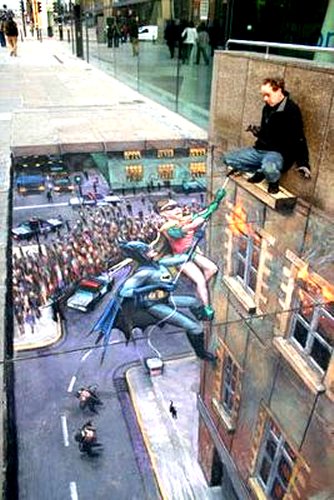 Drawn On A Flat Sidewalk With Colored Chalk.
More Voices From The Past
For those old enough to remember the days before Facebook…
Don't lose that button; I'll sew it back on as soon as I can.
Cow Pokes
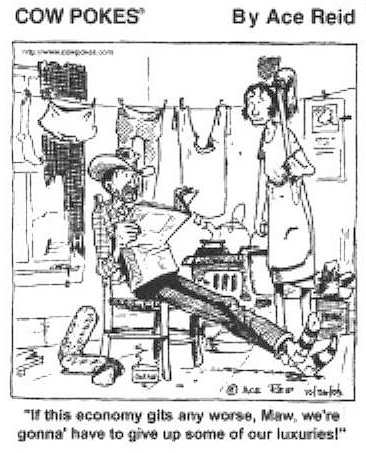
He is currently developing a body of drawings inspired by old lodge portraits. For years the mysterious black and white images of strangely bearded and mustached men, adorned in aprons, jewels and oriental costumes have fascinated him. He is currently making meticulous pencil drawings inspired by some of his favorite found photographs from that era. He hope to eventually mount an art show at a local lodge and evently become a professional portrait artist.
The Banquet
|
|
All material in this site may be used to educate everyone, Freemasons and non-Freemasons alike about Freemasonry and for the promotion of Freemasonry. A very sincere effort is made to avoid using any copyrighted material, without permission or giving credit to the author and source, in the creation of this web site. If you discover something that is yours, without giving you due credit, please let me know and due credit will be given or the item will be replaced.
|
|
|

